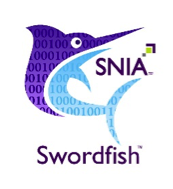 New on the Solid State Storage website is a whitepaper from analysts Tom Coughlin of Coughlin Associates and Jim Handy of Objective Analysis which details what IT manager requirements are for storage performance.The paper examines how requirements have changed over a four-year period for a range of applications, including databases, online transaction processing, cloud and storage services, and scientific and engineering computing. Users disclose how many IOPS are needed, how much storage capacity is required, and what system bottlenecks prevent them for getting the performance they need.
You’ll want to read this report before signing up for a SNIA BrightTalk webcast at 2:00 pm ET/11:00 am PT on May 3, 2017 where Tom and Jim will discuss their research and provide answers to questions like:
New on the Solid State Storage website is a whitepaper from analysts Tom Coughlin of Coughlin Associates and Jim Handy of Objective Analysis which details what IT manager requirements are for storage performance.The paper examines how requirements have changed over a four-year period for a range of applications, including databases, online transaction processing, cloud and storage services, and scientific and engineering computing. Users disclose how many IOPS are needed, how much storage capacity is required, and what system bottlenecks prevent them for getting the performance they need.
You’ll want to read this report before signing up for a SNIA BrightTalk webcast at 2:00 pm ET/11:00 am PT on May 3, 2017 where Tom and Jim will discuss their research and provide answers to questions like:
- Does a certain application really need the performance of an SSD?
- How much should a performance SSD cost?
- What have other IT managers found to be the right balance of performance and cost?









 If you haven’t caught the updates on SNIA SwordfishTM lately, please read on because it’s swimming fast! The new SNIA specification offers a unified approach to managing storage and servers in environments like hyperscale and cloud infrastructures. SNIA’s Scalable Storage Management Technical Work Group (SSM TWG) just announced completion of
If you haven’t caught the updates on SNIA SwordfishTM lately, please read on because it’s swimming fast! The new SNIA specification offers a unified approach to managing storage and servers in environments like hyperscale and cloud infrastructures. SNIA’s Scalable Storage Management Technical Work Group (SSM TWG) just announced completion of
Leave a Reply